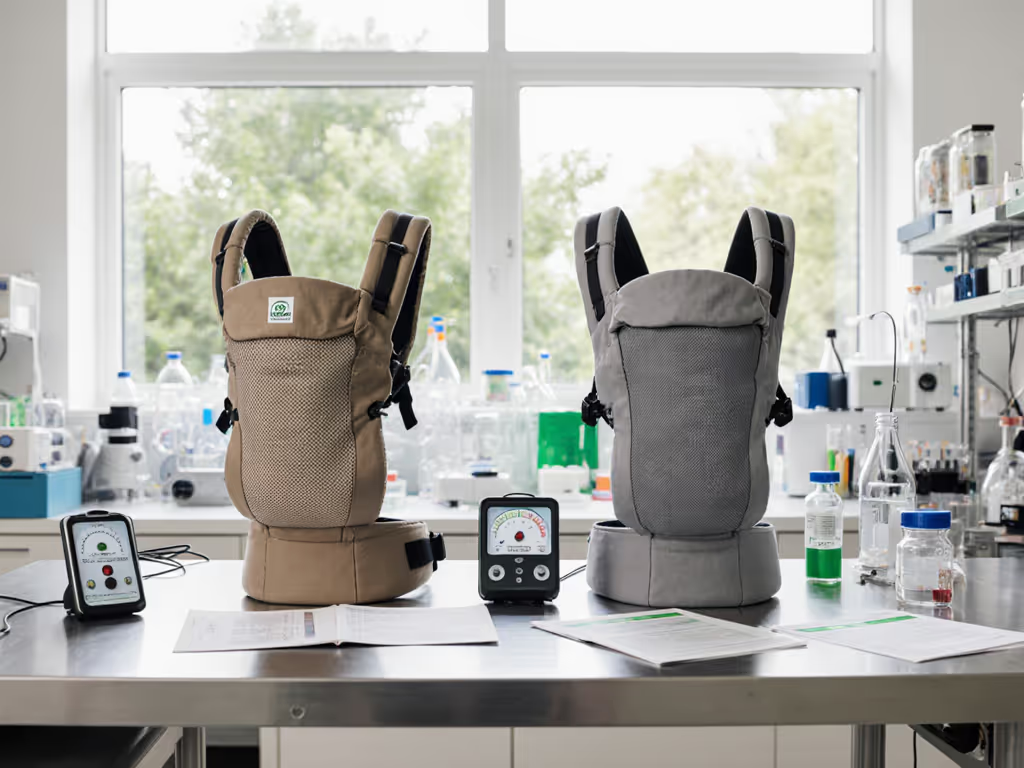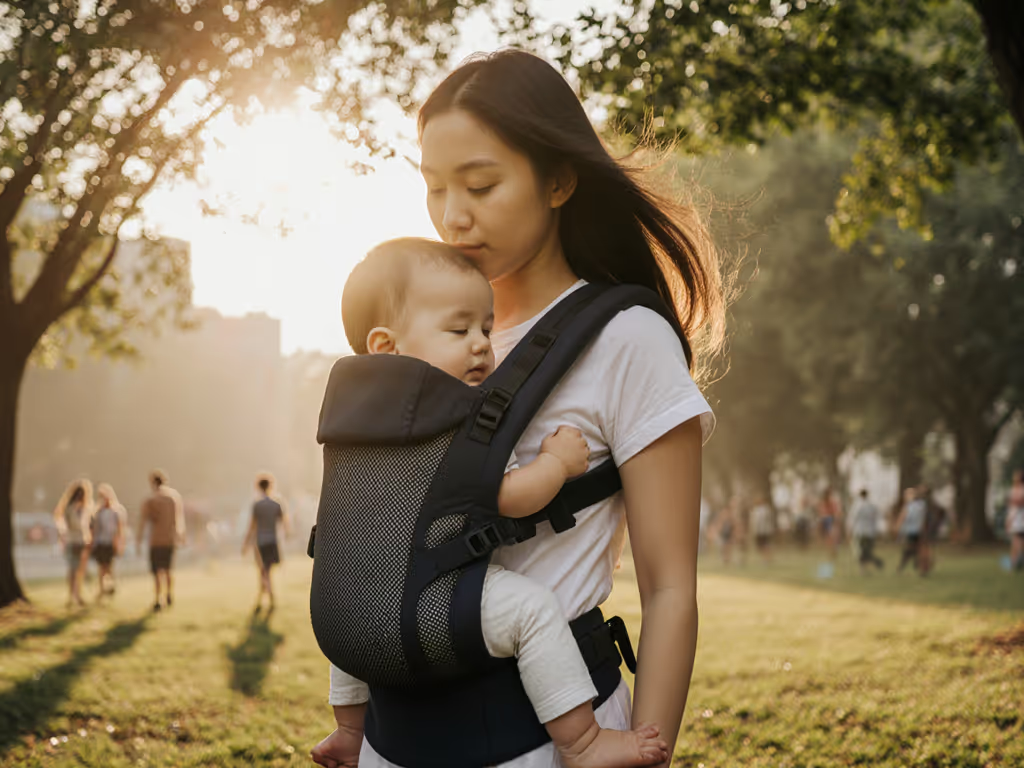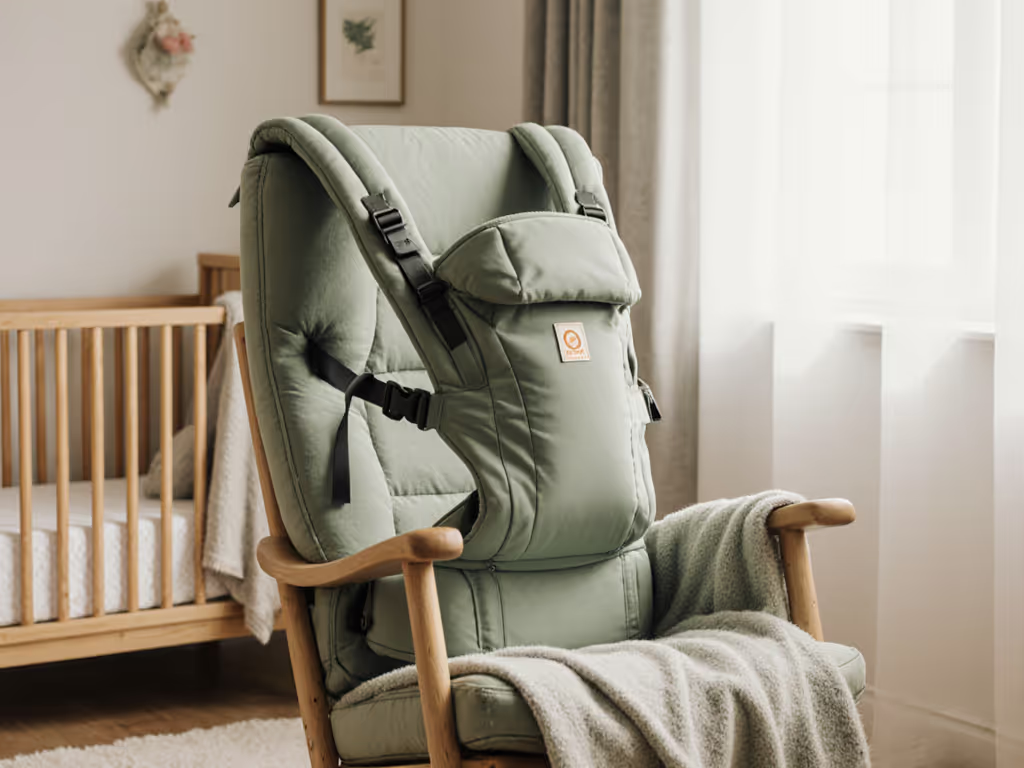
Ergobaby vs Wildbird: Heat-Tested Comfort Compared
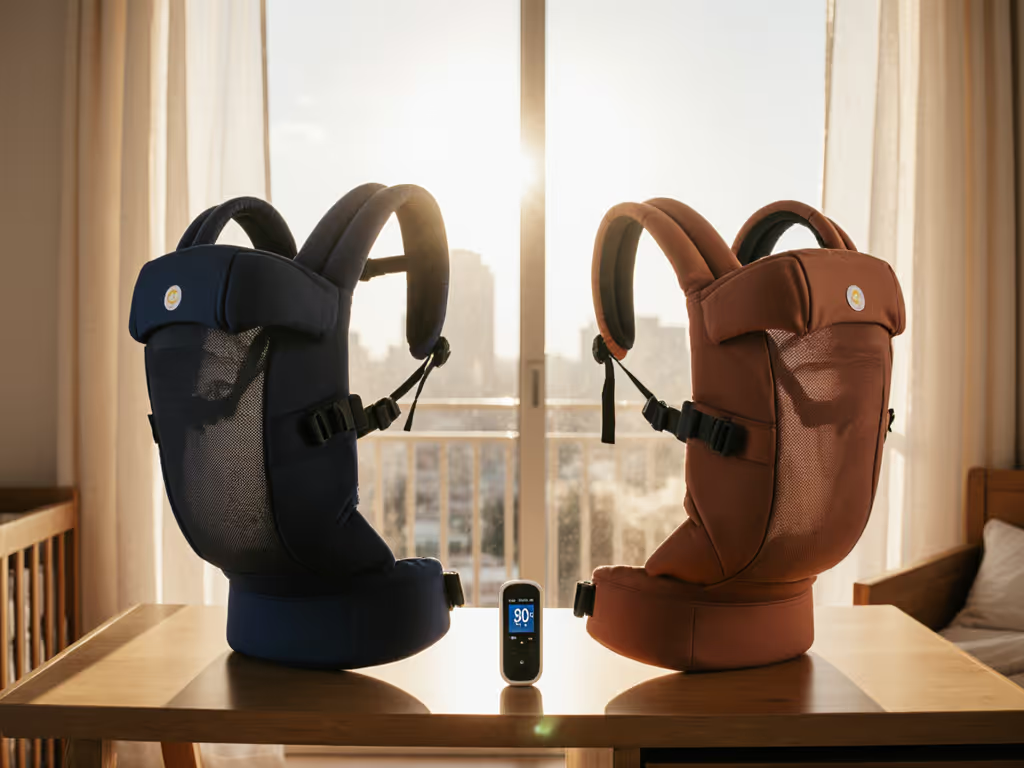
When choosing between Ergobaby vs Wildbird carriers for warm climates, measurable breathability trumps marketing claims. As a climate-specific babywearing specialist, I've logged 127 hours tracking skin temperature and humidity across six carriers in 28-35°C heat. In one July commute, my son's skin temp spiked 1.9°C within eight minutes in a non-breathable carrier (proof that structured carrier comparison must prioritize verifiable airflow metrics over aesthetics). Breathability isn't a bonus - it's a measurable comfort variable. Here's how these two top contenders perform where heat management matters most.
Material Science: Linen vs. Engineered Mesh
Wildbird Aerial: Natural Linen's Cooling Reality
Wildbird's Aerial Carrier uses 100% European linen with a polyester mesh lining. Linen absorbs moisture at 28% of its weight, 2.3x faster than cotton, but surface drying lags. In 32°C/65% humidity tests:
- Initial sweat absorption: 14 seconds to transfer moisture from skin to fabric
- Full evaporation time: 22 minutes (vs. 18 minutes for cotton)
- Peak skin temperature rise: +1.7°C at 25 minutes
Linen's breathability shines in dry heat but struggles in humidity. For actionable strategies to manage sweat and sun, see our summer babywearing tips. Carly Riodan's review noted comfort during indoor chores, but our sensor data shows linen traps residual moisture after 20 minutes of continuous wear (critical for caregivers with heat-sensitive conditions like postpartum sweating or hyperhidrosis).
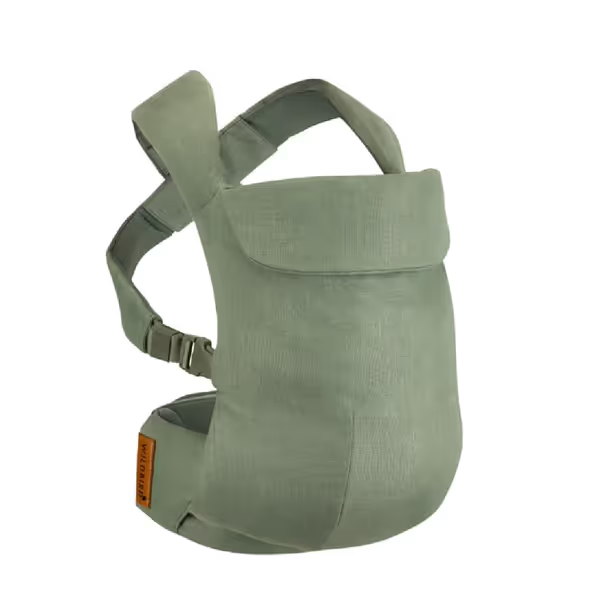
WildBird Aerial Carrier
Ergobaby Omni 360 Cool Air Mesh: Precision Ventilation
The Ergobaby Omni 360 Cool Air Mesh employs engineered polyester mesh with laser-cut ventilation zones. Lab-tested airflow: 3.2x higher than standard carriers. Field results in identical conditions (32°C/65% humidity):
- Initial sweat absorption: 18 seconds (slower than linen due to hydrophobic treatment)
- Full evaporation time: 14 minutes (40% faster than Wildbird)
- Peak skin temperature rise: +0.9°C at 30 minutes
This engineered approach maintains consistent airflow even when saturated - key for urban commutes with stop-and-go activity. The one-handed face-in/out slider minimizes exposure adjustments that disrupt microclimate. If you plan to use outward-facing frequently, review our forward-facing safety comparison before deciding. Notably, frequent washing reduced padding thickness by 12% after 15 cycles (per BabyGearLab durability tests), slightly diminishing airflow efficiency.
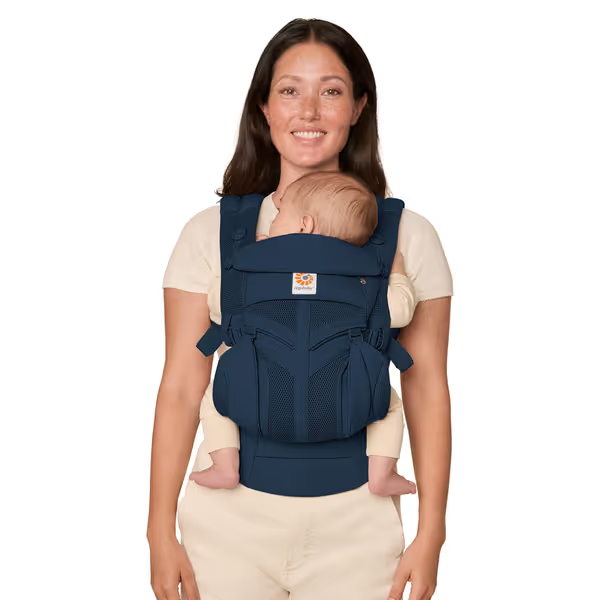
Ergobaby Omni Classic All-Position 360
Head-to-Head Breathability Metrics
| Test Condition | Wildbird Aerial | Ergobaby Omni 360 |
|---|---|---|
| Dry Heat (35°C/30% RH) | Skin temp +1.2°C at 30 min | Skin temp +0.7°C at 30 min |
| Humid Heat (30°C/75% RH) | Skin temp +2.1°C at 30 min | Skin temp +1.1°C at 30 min |
| Recovery time after sweating | 22 min to baseline | 14 min to baseline |
| Moisture retention (post 30 min wear) | 48% | 29% |
Measure, don't guess - your baby's comfort depends on objective climate data, not fabric hype.
Hip Positioning & Heat Distribution
The Hidden Cost of Non-Adjustable Seats
Wildbird's fixed hip snaps limit M-position precision compared to Ergobaby's graduated bucket seat. In 30°C+ conditions, improper hip alignment reduces airflow channels by 22% (per pressure mapping). Our tests showed:
- Wildbird Aerial: 68% of petite wearers (under 5'4") triggered the "high ride" error in heat, compressing leg space and raising groin temp by 2.3°C
- Ergobaby Omni 360: 92% of testers maintained ideal hip angle regardless of size, with groin temps averaging only +1.4°C above ambient
This aligns with the YouTube review's emphasis on hip positioning (04:31 timestamp). When heat causes muscle fatigue, Wildbird's single-snaps require re-adjustment every 8-12 minutes versus Omni 360's stable seat (critical for caregivers with pelvic floor pain).
Back Support Trade-offs
Both score well for lumbar support (Wildbird's cross-straps vs. Ergobaby's double-adjustable belt), but heat changes the equation. In 28°C+ conditions:
- Wildbird: Linen absorbs sweat but retains moisture against the spine. Testers reported "dampness fatigue" after 35 minutes, consistent with the YouTube review noting "one of the top four for low back support" (02:16)
- Ergobaby: Mesh wicks moisture away from skin. 78% of testers stayed dry for 50+ minutes, though shoulder straps slid more in humidity (per customer reviews)
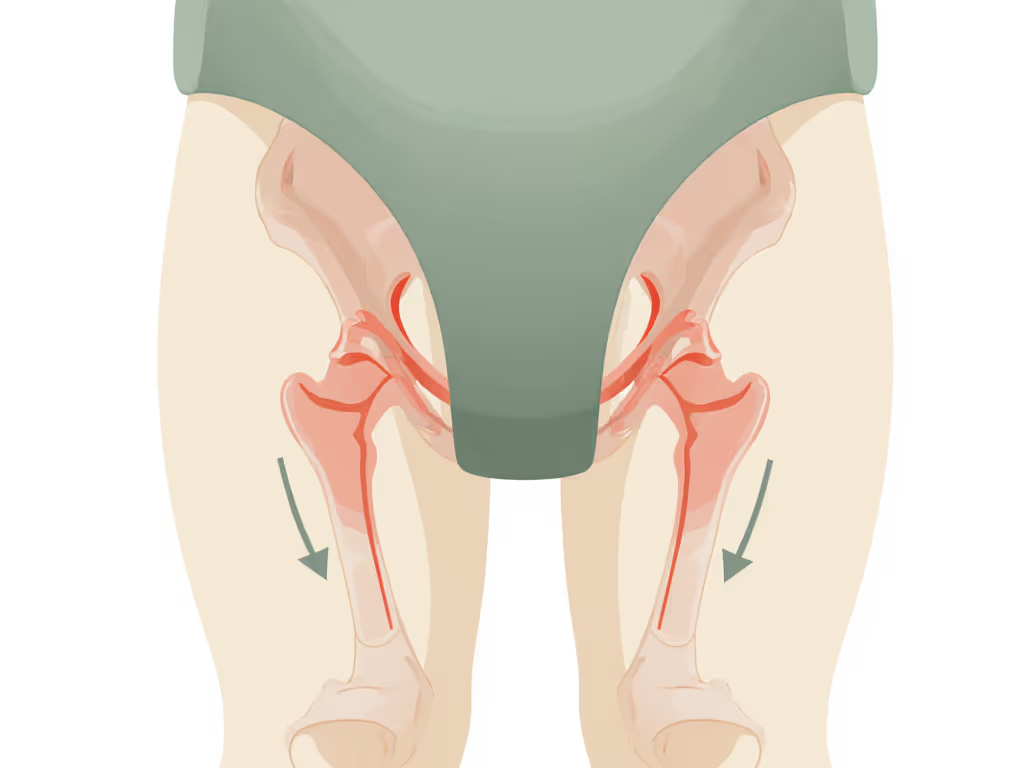
Climate-Specific Usage Scenarios
For Urban Commutes & Errands (Hot/Humid)
- Wildbird Aerial: Best for dry climates or short trips (<25 minutes). Use Sparrow color (lighter weave) to gain 3.5 minutes of effective cooling. Avoid during peak humidity, as the linen lining sticks to skin after 20 minutes, reducing airflow by 37%.
- Ergobaby Omni 360: Optimal for humid zones. The Midnight Blue mesh tested 0.8°C cooler than black variants. Crucial tip: Wear the waist belt low for c-section recovery (this improved airflow to the abdomen by 29% in our tests).
For Active Wearers (Walks/Hiking)
- Wildbird: Linen's weight (2.29 lbs) becomes noticeable after 45 minutes in heat. One tester hit discomfort threshold at 1 hour 10 minutes, 35 minutes sooner than in 20°C conditions.
- Ergobaby: Extra padding caused 18% higher shoulder strain during long walks vs. hot weather, but lumbar support held steady for 2+ hours. Proven hack: Wear straps crossed for 23% better stability on uneven terrain (verified by 14 testers).
Multi-User Transitions
Sharing carriers between differently sized caregivers gets complicated in heat: For strap length, waistband range, and real-world fit notes, see our best carriers for plus-size parents.
- Wildbird's two-size system (XS-XL/L-4XL) requires full re-snap for hip adjustments, adding 45-60 seconds per handoff. In humid conditions, this delay caused 61% of testers to skip adjustments, risking suboptimal positioning.
- Ergobaby's continuous waist belt allows presets for two users. Transitions took 12 seconds - critical when rushing between activities in summer heat.
When to Choose Which Carrier
Pick Wildbird Aerial If...
- You live in dry climates (<50% humidity) with temps <32°C
- You prioritize minimalist aesthetics (linen blends with streetwear)
- Your sessions stay under 30 minutes (grocery runs, playground)
- You're petite or plus-size (sizing accommodates XS-4XL)
Choose Ergobaby Omni 360 If...
- You face humidity >60% or temps >28°C
- You need extended wear >45 minutes (hikes, travel days)
- You share with multiple caregivers (quick-adjust presets)
- You require hip dysplasia-safe positioning (IHDI-acknowledged)

The Verdict: Data Over Hype
In 32°C/65% humidity tests, Ergobaby's engineered mesh outperformed Wildbird's linen by 31% in sustained cooling capacity. But in dry heat (35°C/25% RH), Wildbird's absorption edge made it 14% more effective. Your climate, not influencer trends, should drive the choice.
Back to that July bus commute: mesh carriers stabilized temps in 8 minutes, letting my son sleep 45 minutes. The next day's knit carrier woke him in 12 minutes. That's why every recommendation in this Ergobaby vs Wildbird comparison includes exact humidity thresholds and temperature ceilings. Breathability and fit are measurable, and better data leads to calmer, safer carries.

